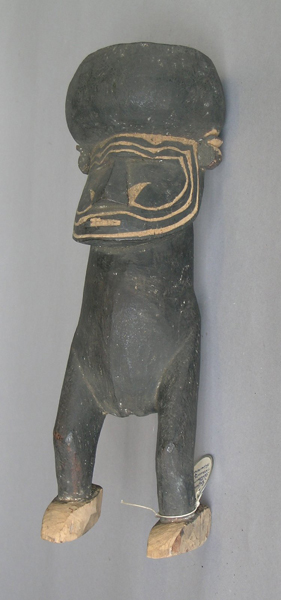In cultures that do not produce an elaborate visual record with accompanying text, there are a great many assumptions made by the original collectors of the works that can often become fact as they are re-written in successive museum catalogues.

Samoai, Wooden carved figure of a girl, Solomon Islands, c.1800s, British Museum, London. British Museum.
This wooden figure is said to come from a meetinghouse in Nufu in the Solomon Islands and was made by a known carver, Samoai. It can be recognized as a girl because of the lines on the face and the absence of male genitalia. We do not know precisely what this figure was used for. If it was located in a meeting house, then its meaning may be symbolic, perhaps evocative of ancestors or even child spirits.
What we can see is that she has a very large head and no arms. Maybe she was wrapped in decorated bark cloth. The record says that she was among many figures, some larger, some smaller, found around the meetinghouse during times of conflict. Maybe she represents children that needed protecting or maybe she was the one providing the protection.
